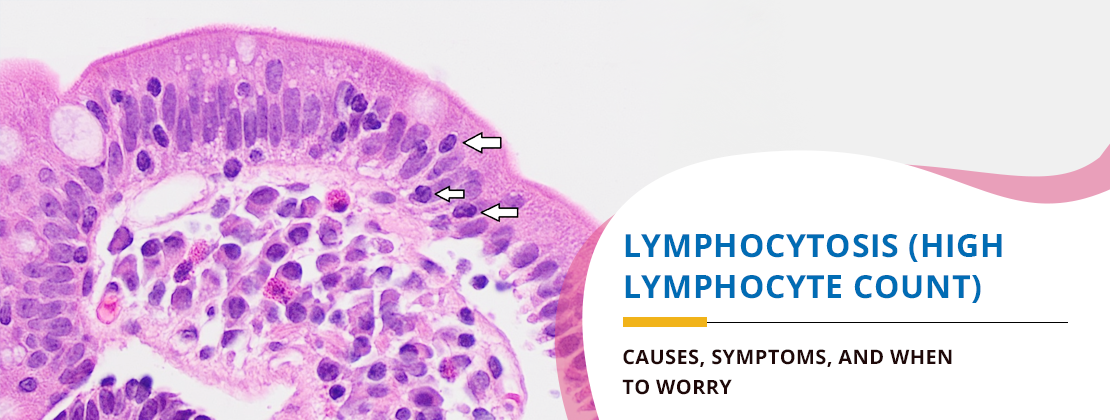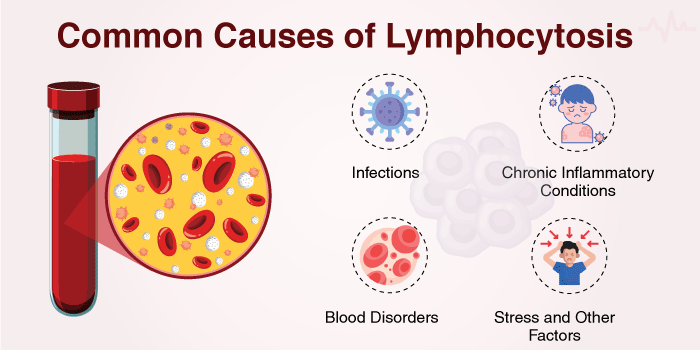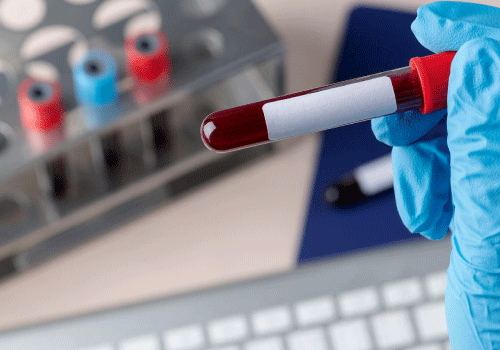
Home / Blog / Lymphocytosis (High Lymphocyte Count): Causes, Symptoms, and When to Worry
Lymphocytosis is an increased number of lymphocytes, a type of white blood cell, in the blood. Lymphocytes are essential for the immune system, enabling the body to fight off infections and other threats. While lymphocytosis does not always indicate a problem, it can sometimes indicate underlying health issues such as infection, autoimmune diseases, or leukaemia.
This blog explores the cause, lymphocytosis symptoms, and lymphocytosis treatment options and guides when to seek treatment.
Lymphocytes are an important immune system component, protecting against infectious agents such as viruses and bacteria. Lymphocytosis refers to a higher-than-normal number of lymphocytes in the blood, usually detected during routine blood tests.
There are two types of lymphocytosis:
Recognising these differences is important to understanding the significance of the situation.

Autoimmune diseases such as rheumatoid arthritis and lupus cause lymphocytosis because the immune system mistakenly attacks healthy tissue, causing inflammation.
Certain types of leukaemia, including chronic leukaemia and lymphoma, result in uncontrolled lymphocyte production, leading to increased rates of lymphocytosis.
Physical or emotional stress, certain medications, and smoking can slightly increase lymphocytosis levels.
Many individuals with lymphocytosis have no obvious symptoms. It is usually diagnosed during routine blood tests for other reasons.
Symptoms associated with causes
In cases of blood cancers, lymphocytosis symptoms may include night sweats, unexplained anaemia, or extreme fatigue. These cases prompt immediate medical attention.

A complete blood count (CBC) is the primary diagnostic tool for lymphocytosis, measuring the number and quality of white blood cells.
If lymphocytosis is diagnosed, additional tests such as a viral panel, lymphocyte count, and bone marrow biopsy may be needed to establish the root cause.
Additional tests help distinguish between mild infections and severe conditions, such as leukaemia, and more accurately lymphocytosis diagnosis.

For mild cases or situations where the cause is not serious, routine and follow-up blood tests may suffice as an effective lymphocytosis treatment strategy.
Although lymphocytosis is not always dangerous, symptoms such as unexplained weight loss, persistent fever, night sweats, cough, or varicose veins warrant further investigation.
If you have severe symptoms such as abnormal bleeding and prolonged fatigue, seek medical advice.
For individuals with the diagnostic conditions of lymphocytosis, regular monitoring of the condition and adherence to treatment regimens are necessary to effectively manage the condition.
Lymphocytosis can be caused by a variety of factors, including infection, autoimmune diseases, and leukaemia. While it can usually be asymptomatic, it can also indicate serious health issues. Understanding the lymphocytosis symptoms and seeking medical advice on time is essential for proper lymphocytosis diagnosis and treatment. If you have concerns about your lymphocyte count or related symptoms, consult a specialist at HCG hospitals for proper care.
Lymphocytes (a type of white blood cell) form the primary immune defense and offer protection against various infections.
1,000–4,800 cells per microliter of blood (1.0–4.0 x 10⁹/L) is the normal range for lymphocytes, which account for 20-40% of total WBCs.
In children, until the immune system matures (which happens at age 7 or 8), the lymphocyte range is slightly high.
A lymphocyte count that is lower or higher than this range should be evaluated to find out the underlying cause and seek necessary treatment.
An abnormal increase in the number of lymphocytes in the blood is referred to as lymphocytosis, and there are two types.
Absolute lymphocytosis is alarming and requires immediate medical attention; relative lymphocytosis, on the other hand, might occur following minor infections or stress.
Mild lymphocytosis is typically detected during regular blood tests and is asymptomatic in the majority of cases. That said, the following symptoms should not be ignored, and additional assessments should be considered:
A bone marrow biopsy enables medical professionals to determine the cause of the elevated lymphocytes. It is only advised if your blood counts remain abnormal for an extended period of time or if your doctor detects a blood condition, such as leukemia or lymphoma.
The biopsy assesses your bone marrow health and helps confirm or rule out serious illnesses.
There are a few parameters that physicians consider while differentiating infection-related lymphocytosis from other blood disorders.
Infection-related lymphocytosis manifests abruptly and disappears as soon as the infection resolves. Lymphocytosis caused by leukemia and other blood disorders can last longer and may appear as immature lymphocytes on the blood smear.
Doctors recommend various tests, such as imaging scans, bone marrow studies, and flow cytometry, to determine the underlying cause and recommend appropriate interventions.
Depending on the cause, your doctor could repeat the test in two to four weeks to check if it has returned to normal.
Your doctor may recommend more frequent follow-ups if the count stays high or if additional symptoms develop.
Yes, once the infection is gone, it usually goes away on its own.
For instance, the lymphocyte count often returns to normal levels within a few weeks in cases of viral infections, such as mononucleosis or the flu.
Your doctor might suggest additional testing to rule out other causes if the count is elevated for more than two to three months.